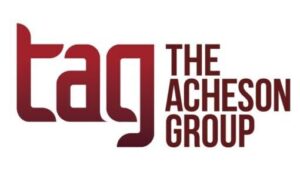Going back to the passage of the Federal Food, Drug, and Cosmetic Act (FFDCA) in 1938 and subsequent amendments, the FDA has diligently and consistently provided food safety assurance for the marketplace introduction of food and color additives. To achieve authorization, food and color additives require a scientific review and evaluation process conducted by the FDA that includes a notice and comment regulatory process. In contrast, the GRAS (generally recognized as safe) process requires the same level of scientific evidence of safety; however, it does not require FDA authorization and instead must achieve a “general recognition of safety” by qualified experts trained through education and/or experience in food safety, typically toxicology. Hence, while food/color additives and GRAS substances have an equivalent safety standard, which is a “reasonable certainty of no harm,” the process for food and color additives requires the promulgation of a regulation by FDA, whereas a GRAS substance must achieve a consensus of a “general recognition” of safety by the scientific community based on scientific evidence that is widely known and/or publicly available. Both food/color additives and GRAS substances are deemed safe under specifically defined intended conditions of use.
In determining whether a food additive satisfactorily meets the safety standard, the FDA has published information on how the FDA regulates a food additive. A food additive has a regulatory definition that does not include GRAS and is in fact separate from a color additive. When evaluating the safety of an ingredient submitted in a food additive petition, the agency must consider certain key information, including but not limited to: (1) the identity of, and the manufacturing process for the food ingredient; (2) how much of the food ingredient will be used in food and what types of foods; (3) the expected amount of the food ingredient that consumers will eat; (4) how the food ingredient metabolized in the body; and (5) the results of scientific (toxicological and other relevant) studies on the safety of the food ingredient.
Experts at the FDA will review and evaluate this and other scientific information relevant to the safety of the food ingredient on whether it satisfies the required safety standard. The process for obtaining approval for a color additive similarly involves submission of a color additive petition to the FDA, scientific review and evaluation, and only if deemed safe, eventual issuance of a regulation. Synthetic food colors have an additional regulatory requirement involving a certification process to ensure the purity of the food dye. Additional details on the food and color additive petition requirements can be found in FDA guidance.
Due to the extensive amount of scientific information that must be assessed and the prolonged regulatory notice and comment process, for many food and color additive petitions the time necessary to obtain authorization from the FDA quite often takes many years. As a result, a large portion of food/color additives were evaluated and approved by the FDA several decades ago with relatively few submissions occurring in the last couple of decades. Nevertheless, science continues to evolve with a continuation in the understanding of the underlying chemistry and biology critical to assessing the safety of a food/color additive.
Concurrent with this scientific evolution is the development of more reliable and precise scientific models to predict the potential toxicity of a food/color ingredient in humans. As a result, the FDA has embarked on a program for the post-market evaluation of food/color additives as discussed in TAG’s June 30 Insights article. FDA has provided a 30-day time period for public comment on the process (ending July 18, 2025) that involves a science-based, risk ranking systematic approach for triaging substances in food, including food additives, color additives, GRAS, and food contact substances, as well as unintentional contaminants that can find their way into food. Candidate chemicals will be evaluated by FDA subject matter experts and scored against a set of criteria. These include toxicological data indicative of severe health effects, current dietary exposure estimates, assessment for vulnerable subpopulations, and the emergence of newly available information, data, or science not considered in the original assessment.
This public health article is the first of four that TAG will provide to examine the FDA approval process for food and color additives, and their food safety. The second one will cover the safety of color additives in general and more specifically the continuing research into the association between certain synthetic color additives and neurobehavioral effects in children. The third will focus on FDA’s regulatory process for authorizing color additives in comparison to other national regulatory authorities, like that of EU and Canada. The final one in the series will take a closer look at certain chemicals and concerns about their food safety, including recent initiatives by the FDA to ensure that additives continue to play an important role in ensuring that FDA regulated foods remain varied and safe.
Infectious Disease News:
- The Pan American Health Organization (PAHO) said Canada has confirmed 3,170 cases of Measles, 1 of them fatal, and Mexico has recorded 2,597 cases, including 9 deaths. Canada has the most cases since the country eliminated the disease in 1998.
- The European CDC is tracking the incidence of mosquito-borne diseases this season. France is reporting a very early start to their season with 6 outbreaks of locally acquired Chikungunya virus disease reported in late May/early June. In the past, such cases haven’t been reported until July or August.
- The National Association of County and City Health Officials (NACCHO), with support from the CDC, is awarding funds to support local health departments in implementing and expanding wastewater monitoring to track disease trends and emerging health threats in their communities. The focus is on rural areas with a mentorship approach so that expertise can be shared broadly. Wastewater surveillance monitors for genetic material and may show changes in disease trends before trends are seen in clinical cases.
- A recently published meta-analysis of 32 studies on the Hepatitis A virus showed a public health advantage of vaccinating food handlers against this illness, as well as providing some possible economic benefits.
- Instead of culling birds when the bird flu is discovered, HHS Secretary Robert F. Kennedy Jr. has suggested allowing bird flu to spread unchecked in poultry flocks to identify and preserve the birds immune to it. Although RFK doesn’t have jurisdiction over farms, Agriculture Secretary Brooke Rollins has voiced her support, noting that there are some farmers who are willing to try a pilot “as we build the safe perimeter around them.” Numerous experts have voiced opposition, noting that not only do biology and immunology not work that way, but that this could lead to trade embargoes against US poultry.




